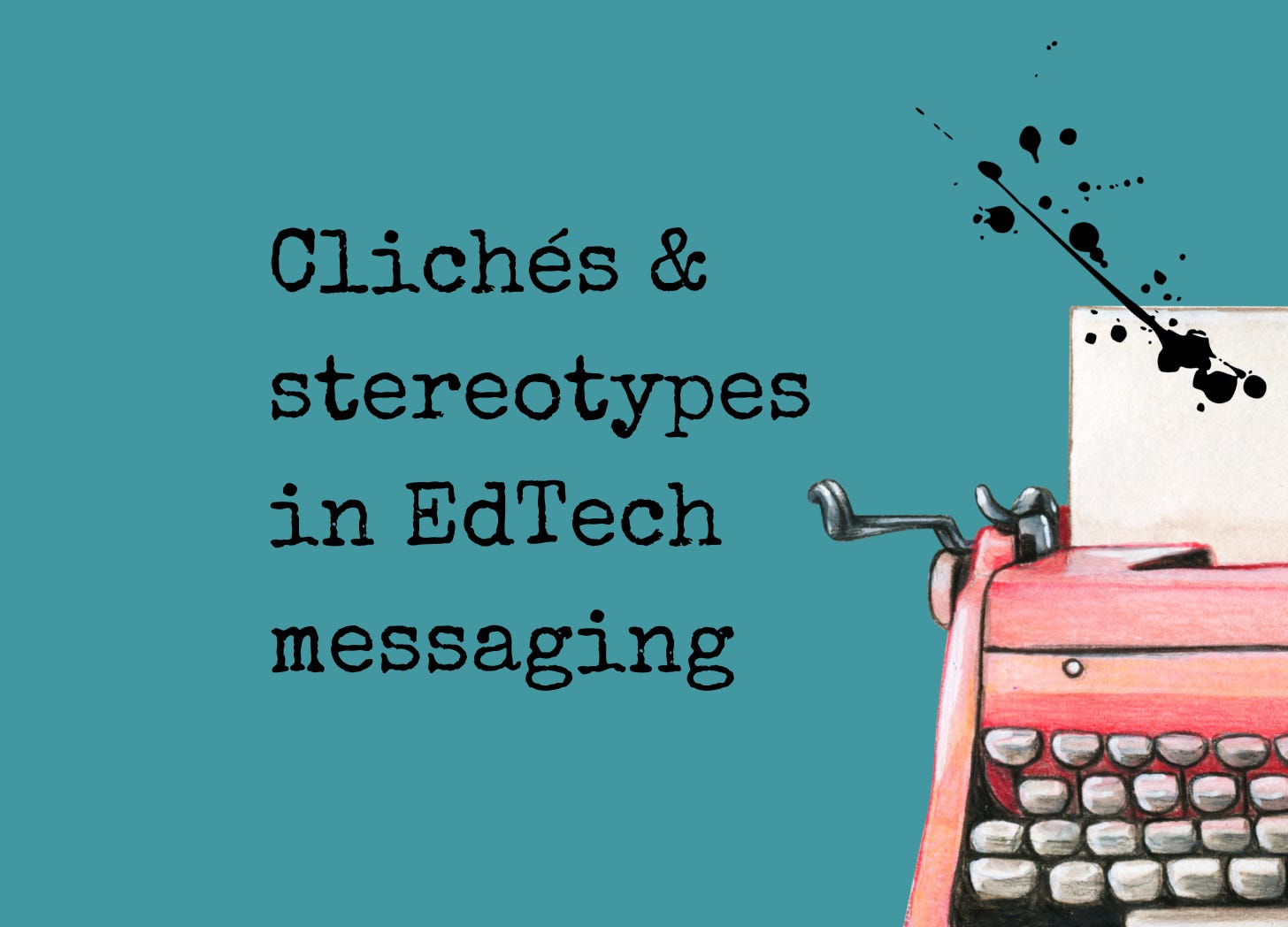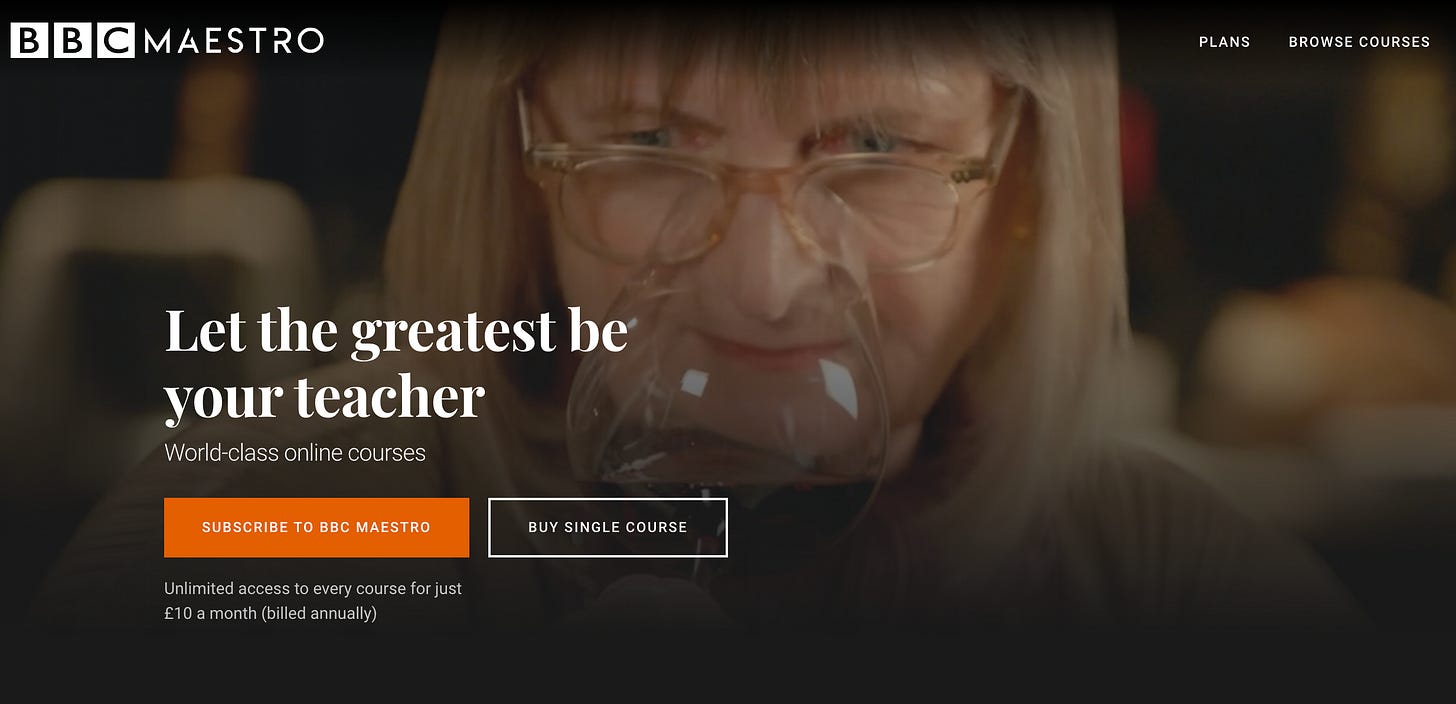Clichés & stereotypes in EdTech messaging
Please refrain from being "the future of" anything (and remember that women buy tech too)
Did midlife women like me “learn” than tech is for boys back in the 80s?
My experience suggests so. Our first home computer, an 1980s Amstrad, belonged to my brother. Along with his friends, he was interested in gadgets. I definitely wasn’t. None of my female friends were hyped up about new technology. There was zero peer pressure for us to own the latest tech.
When I was at university in the 90s, I cycled to my (male) friend’s house to type up my thesis on his word processor. I didn’t have a computer. Not, thankfully, because of digital poverty, but because I’d no interest in prioritising owning one. My formative experience is far from unique.
So did lots of Gen X women unwittingly tell themselves that tech wasn’t a good fit for them? Steve Henn, NPR technology correspondent, thinks so - "This idea that computers are for boys became a narrative. It became the story we told ourselves about the computing revolution. It helped define who geeks were, and it created techie culture."
Women still don’t fit in equal numbers within tech culture, as a PWC report on women in tech pointed out - “just 23% of the people working in STEM (Science, Technology, Engineering and Mathematics) roles across the UK are female - and only 5% of leadership positions in the technology industry are held by women.”
There’s also a gender pay gap in in venture capital funding for tech startups. It’s all bound to influence product design, marketing and branding in tech.
Before I started researching this topic, my loose impression was that tech marketing skews towards younger/male markets. Very little that I’ve found so far has changed my mind. I decided to start my investigations with EdTech, as it has the reputation of being the least ‘bro’ of all the techs. Let’s see what I found.
You know that other cliché - you can’t be what you can’t see? It seems to apply here.
In order to be enthusiastic users of EdTech, women need to see themselves represented in the marketing. Like this, from BBC Maestro -
Many women, midlife or not, are career pivoters, entrepreneurs, lifelong learners. We’re likely to take steps to learn new skills ourselves. We’re often responsible for other people’s learning too, as parents or educators.
Digital learning became normalised during the pandemic - surely a boon for EdTech? And women were significantly more likely than men to have been in control of homeschooling during that time (just check the stats). That’s reflected in the many testimonials from women I’ve read on EdTech websites.
Here’s the positive news. I discovered many attempts to address gender imbalance in EdTech visuals, particularly for tech products meant for children and young adults. Photography and illustration in this niche tends to be inclusive. However, it was not usually age-diverse. I came across virtually no examples of midlife (or older) women in any of the brand visuals. Almost none. And yet the buying power of midlife women is immense. Think about that!
Surely this is an untapped market for EdTech brands? And if we’re already important buyers in this niche, then I’m sorry to say that most EdTech businesses seem to be ignoring us!
Copywriting clichés in EdTech messaging
No shade to any of the copywriters. It’s hard to make messaging stand out. In my own copy projects, I’ve also often found that solopreneurs are more open to shaking language up than bigger businesses. They don’t have to justify their messaging choices to anyone else (hello, marketing team!) and they’ve already planted a flag of independence by striking out on their own.
With big brand EdTech messaging, a forgettable word salad is more typical. Remember I wrote about conversational copy? Did anyone ever wake up and decide that today’s the day they unlock their professional and personal growth?
The future of what?
I looked at lots of topline messaging from EdTech brands, including above-the-fold website messages and About pages. Here’s what I decided. Please don’t tell us you’re the future of anything. It’s overused and unspecific.
Multiverse - The future of work is skills-first.
Unibuddy - Student-to-student marketing is the future.
Kortext - The future of learning, powered by Al.
Eduflow - The future of corporate learning is social.
Guild - Let's build a future of work that works for everyone.
This reliance on the word future is not unique to EdTech brands. It’s widespread in Tech in general. Witness GE - Inventing the future of industry.
Meanwhile Labster is Reimagining the future of education. Which leads me on rather nicely to those -ING words.
Edit the -INGs
“If you liked it then you shoulda put a -ing on it,” to [mis]quote Beyoncé. To be clear, you probably shouldn’t.
Those messaging straplines that begin with an -ING verb usually doesn’t speak to the customer. They’re more about the brand. An -ING word is often a sign that your messaging is not focused microscopically on buyers’ needs.
Here’s Ellipsis - Removing barriers to teaching computer science.
Incidentally, remember UniBuddy above? Unibuddy is Reimagining how higher ed does recruitment.
While Hopster is Making screentime SMART!
There’s absolutely nothing wrong with the fundamentals behind any of these messages, and the -ING issue is an easy fix for a copywriter. We can just change weaker -ING verbs to the simple present tense, thus making the sentence more direct. We might need to reshape the sentence slightly to accommodate the change. That’s usually a sufficient edit to shift the focus from brand to buyer. For example, the Hopster edit would become Make screentime smart! (now focused on the parent/carer need, not the brand action.)
You know you’ve been ChatGPT’d when …
Your messaging contains unlock or unleash.
I don’t think I’ve ever put an idea prompt into ChatGPT where the response hasn’t included the word unlock. Given that these language models learn from existing material, there was clearly much unlocking and unleashing in the copywriting world in the last decade. I used it myself occasionally. No more!
It’s back to that drive towards more conversational language. In conversation, I unlock doors. I don’t unlock my potential. Sorry Preply - Unlock your potential with the best language tutors.
Clear, conversational EdTech messaging
I pulled out some great examples of clear EdTech messaging for swipe file inspiration.
I liked MarcoPolo’s simple, but thought-provoking, statement - Curiosity is learning.
Personally I would swap the order of SplashLearn’s messaging. That’s because the unspoken emotional needs in EdTech are often those of educators or parents, not the “students”. That’s why I would lead with this - Boost Confidence. Increase Marks. Get Ahead. It has more emotional resonance.
The explanatory subhead would then read - The Complete Reception to Year-6 Maths Learning Programme Built for Your Child.
I always enjoy a one-liner that conveys a sense of efficiency, so full marks to Quizizz for getting straight to the point - Start motivating students. In minutes.
Same goes for Uptime - Get smarter in just 5 minutes.
Coming up
My research into tech copywriting (and the female market) continues. For now, my main takeaway is this: EdTech brands should check that their messaging and branding doesn’t unwittingly reflect the presumption that mainly younger (male) markets are tech-savvy and open to digital learning. It’s clearly untrue.









